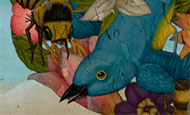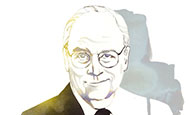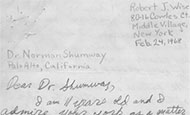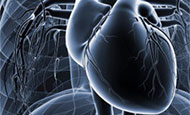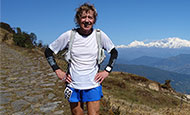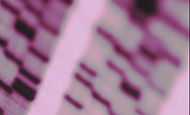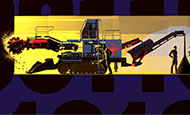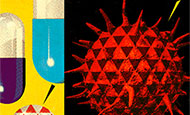SPRING 2014
But many experts believe better options are coming: They expect research on stem cells to bring about a revolution in care for heart disease patients.
BACK ISSUES
Online versions of the magazine from 1999 to present are still accessible. BACK ISSUES »


Download Printable Issue (PDF)
Letter from the dean
Stanford’s heart history
THE BACKSTORY
Search, rate, comment
Gutted
A new study by researchers at the School of Medicine could help pinpoint ways to counter the effects of the antibiotics-driven depletion of friendly, gut-dwelling bacteria. MORE . . .
Bleach of promise
Itís like a mini spa. Mice enjoying frequent dips in a lukewarm, dilute bleach solution emerge not only fluffy and squeaky clean, but also (after two weeks of daily treatment) with thicker, more-elastic skin on their bellies. MORE . . .
Caribbean genes
Slavery, colonization and immigration. The Caribbean has been a busy place for the past several hundred (and thousands) of years. Geneticists Andres Moreno-Estrada, MD, PhD, and Carlos Bustamante, PhD, recently dove into this melting pot in an attempt to discern exactly how much of human history remains stored in the modern-day genes. MORE . . .
Liver lode
In a feat of modern-day alchemy with huge potential for regenerative medicine, Gary Peltz, MD, PhD, and his colleagues have developed a fast, efficient way to turn cells extracted from routine liposuction into liver cells. MORE . . .
In the nose
David Relman, MD, professor of medicine and of microbiology and immunology, and his colleagues have revealed that formerly overlooked sites deep inside the nose can be reservoirs for Staphylococcus aureus, a major bacterial cause of disease. MORE . . .
Ladykillers
Women, if youíve ever thought the men in your life were trying to kill you, you could be right. That is, if youíre a roundworm. MORE . . .
Down insight
Is Down syndrome a stem-cell-associated disease? Recent research published in Nature by cancer biologist and stem cell expert Michael Clarke, MD, suggests that it could be ó at least in part. MORE . . .
Itís all in the translation
A Stanford center focused on accelerating the translation of medical research from bench to bedside will receive $45.3 million over four and a half years from the National Institutes of Health. MORE . . .


